Marantz NR1510
Product Name: Marantz NR1510
Product Description: 5.2 CH 4K AV Receiver
-
Design - 9.4/10
9.4/10
-
Audio Quality - 8.6/10
8.6/10
-
Inputs / Ports - 8/10
8/10
-
OS, Apps and Features - 8.3/10
8.3/10
-
Price / Quality - 7.8/10
7.8/10
Summary
Total Score
Pros
- Very good sound performance
- High Resolution Audio support
- Compact design
- Huge feature list
Cons
- A bit underpowered at 50W per channel
- No Dolby Atmos or DTS:X
- No up-mixing or virtual tech support
- High price for what is offered
Cheapest Places to Buy :
*We are a reader-supported website. When you buy through links on our site, we may earn a small affiliate commission at no extra cost to you. Home Media Entertainment does not accept money for reviews.*
If there is one thing we love about Marantz’s lineup or AV receivers is their NR slimline series that is destined for those that have extremely limited space but would still love to create a full blown surround system instead of going for a soundbar or other less than satisfying solutions. As such Marantz have been very stellar with their yearly released models that have included 2 models every year. In our Marantz NR1510 review today we will be looking at the smaller of the two which also happens to be the only AV receiver in Marantz’s arsenal that doesn’t support any of the object-oriented audio tracks.
The NR1510 is the absolute lowest you can go with 5.2 channels at 50 watts power, supports Dolby TrueHD and DTS HD Master Audio, comes with the Audyssey MultEQ calibration system and packs plenty of features like High Resolution Audio, HEOS and Airplay 2, support for all voice control platforms as well as custom integration while it has both WiFi and Bluetooth built-in.

A while ago we had the pleasure of reviewing the higher end model in the series for 2019, the Marantz NR1710, and frankly for such a small unit it left us really amazed by its capabilities and feature complete list so we were curious to see how much we would be loosing in our transition to this lower cost unit. At $150 less than it’s bigger brother does the price different is worth it or competition between these two units is more fierce than it looks? Keep reading to find out.
Design
If there is one characteristic that comes front and center on the NR series this would definitely be their ultra-slim designs making them easier to fit in all sorts of tight places that a normal sized receiver wouldn’t fit. AV receivers usually are not the most pleasant looking audio equipment. With most of them sporting a rather uninteresting and ugly black squarish box design, the NR1510 is somewhat a more pleasant sight. Obviously the unit doesn’t have anything else to make it more good looking but even such a drastic reduction in each size can make it look better. The smaller size is a major selling point of all the NR models and one of the reasons why many people are interested in them.

For 2019 the NR1510 looks exactly the same as it’s bigger brother, the NR1710 as well as last year’s NR models. There is no difference whatsoever so except from the naming in the front and back you will be hard to understand which unit is which just by looking at the outer shell. The unit comes with a size of 17.3″ x 14.9″ x 4.1″ (440 mm x 378 mm x 105 mm) if you place the antennas in a horizontal position as this way you gain some height and keep a good signal at the same time. The receiver weights just 18.1 lbs (8.2 kg) making it one, if not the most compact and lightweight surround receiver we have tested so far.
Let’s see now what the NR1510 has at it’s front face. The NR series may be smaller in size but when it comes to their front face controls and connections they come fully featured and don’t miss anything any of the bigger and higher end models offer. The NR1510 follow exactly the same design principles with two big turning knobs at each side for volume and input selection with the central display showing all the important information you will need.

Under the input selection knob there is only the power button while below the central display we get a single row of thin buttons separated into two groups. The one on the left has buttons for M-DAX, tuner and internet radio while the one on the right has buttons for dimmer, status, sound mode and pure direct. Last but not least under these buttons we get a few front connections with a headphones jack and the Audyssey calibration microphone port on the left and a USB port (5V, 1A) for connecting external storage and a HDMI input on the right side. Everything else is located at the back and we will talk about them a bit further down.
Even as we are talking about the smaller and most weak of all the models, being a Marantz certainly comes with a certain degree of quality that the company is so famous for. Of course it doesn’t come with all the exotic audio parts that Marantz is advertising in their higher end models but even as such the NR1510 has a high-current discrete power amplifier section and features identical power on all five channels with low-impedance drive capability for superior speaker control showing that Marantz is paying attention even on it’s most weak units.

The unit may be sporting exactly the same design as the NR1509 so since not much have changed as far as it’s features and functionality the same applies for the remote that comes with it which is exactly the same one we saw last year (RC040SR). With a relatively big size there is ample of space for the included buttons to have enough distance between them to avoid any accidental inputs. We would like to have slightly bigger buttons as it would make things a bit easier while the lack of a backlight function make things harder. Most of the buttons have a fluorescent look so they will slightly glow in the dark making things a bit easier to distinguish.
At the top of the remote we get all the input buttons grouped together including Bluetooth and HEOS functions while exactly below we get channels, volume and navigation control buttons. Below them there is a trio of playback buttons and four smart select buttons where you can save your custom setups that include input, volume and Audyssey configuration. At the bottom we find four buttons that control the various sound modes of the receiver. With exactly the same design and functionality our opinion remains the same as before. A good and functional remote without offering anything fancy. With so much space Marantz could definitely create a more compact design than this.
When we reviewed the NR1710 we were very pleased that Marantz was able to offer such a quality product in such a small form and this seems to continue on their smaller model also. The NR1510 may be the weakest of them all but quality and design wise is on par with the company’s standards.
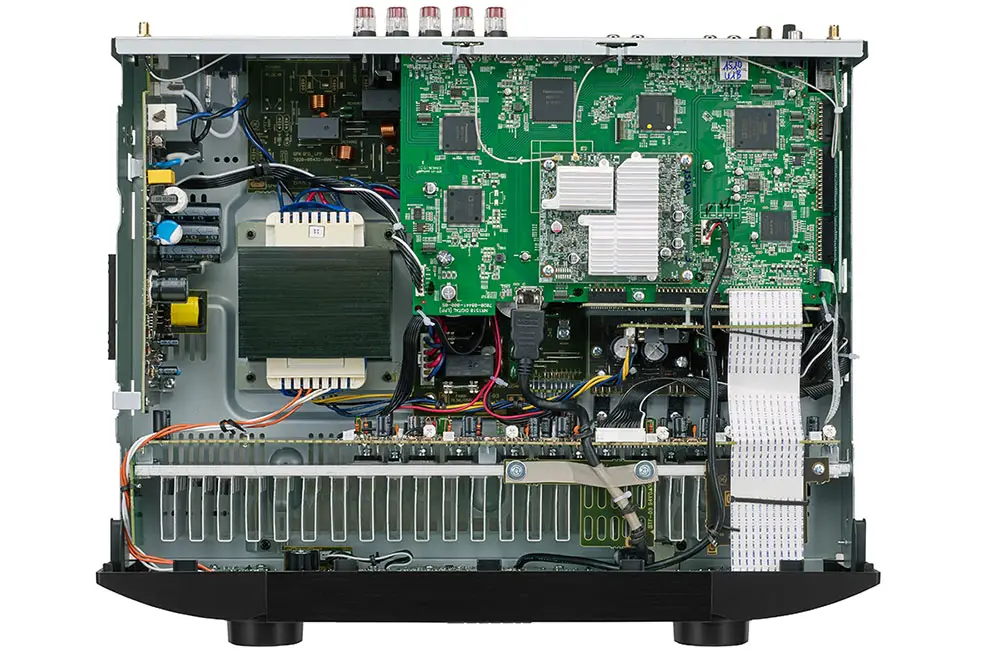
Audio Quality
The NR series seems to share a few common characteristics and this trend continues with the NR1510. The unit comes with 5.2 channels of built-in amplification which is the absolute minimum in order to create a basic surround audio setup. With 50 watts of power (8 ohm, 20 Hz – 20 kHz, 0.08% THD) the receiver is mostly suited for small living rooms and media rooms where not a lot of power is needed.
The receiver supports Dolby TrueHD and DTS HD Master Audio only as there is no Dolby Atmos or DTS:X here while also absent is any kind of up-mixing or virtual technologies with the end product offering a very basic package that is more than perfect for newcomers and casual users. Since the receiver cannot support more than 5 channels some of these virtual technologies could potential benefit the system but most probably they had to cut these in order to keep the cost as low as possible.
As such for our testing we went for a 5.1 channels setup which is as basic as it can get. For our first movie test we selected the 4K UHD version of Battleship that comes with an amazing DTS:X mix even if the actual film quality is not as good as it’s effects. With the receiver not supporting any kind of object-oriented tracks the mix is scaled back to the more basic DTS HD Master Audio that is not too shabby either.
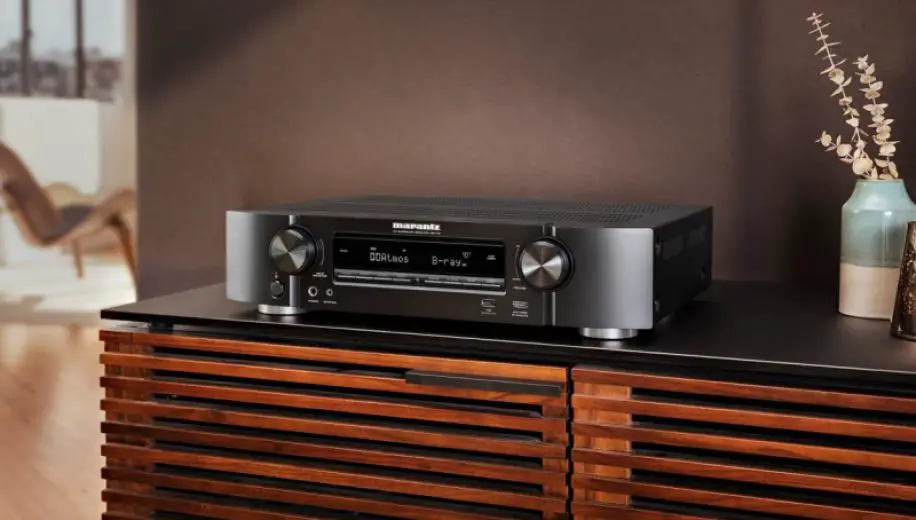
With no overhead speakers whatsoever the first thing that becomes very obvious is that the overhead layer is completely missing making the soundstage feel a bit less dimensional. Obviously having got used to hear Dolby Atmos tracks all the time this was to be expected to a certain degree but we are here to give you an idea of what this receiver offers and not what it doesn’t. So with this in mind let’s talk about the front first.
Both main channels had very good clarity and resolution while the center channel provided the dialogue that was very distinct even during heavy action scenes. The three front channels created very good and wide frontal dispersion and good separation between them. The surround speakers added the necessary depth behind us and the film provided plenty of opportunities for them to flex their muscles with projectiles flying all over the place. Channel shifting between the surrounds and the front was very good without giving us a sense of the receiver lagging at any point.
Plenty of explosions here so our subwoofer was busy most of the time with the NR1510 providing all the necessary info to it in order to shake our room. For such a busy film the unit behaved very well all things considered. The front soundstage felt satisfying and full with the surround providing the necessary extension behind us and the subwoofer taking care of the low frequencies what we got here is a lovely little home cinema system. The lack of any action above our heads is one thing missing but when you go for such a unit this is to be expected.
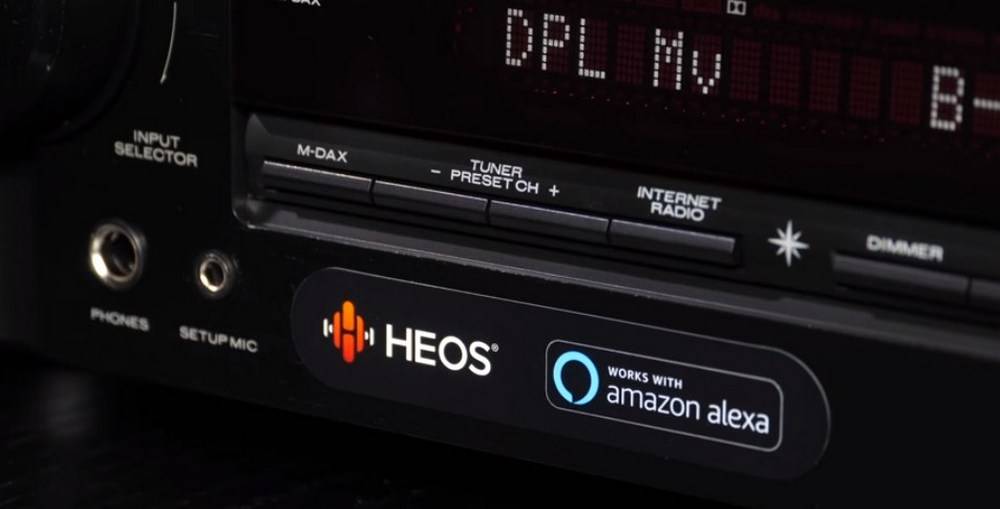
Next in line is our all times favorite Lord of the Rings: Return of the King with it’s DTS Master Audio track. Watching the siege of Minas Tirith is always a pleasure and the NR1510 made sure to provide all the small details such an amazing mix has. From the trolls growling, the shaking of the ground from the Mumakils or the screaming of the Fellbeast the receiver kept a very stable and balance performance throughout all the frequencies and across all channels.
The front took the lead with the three channels providing good extension to the sides of the TV while surround activity pushed the immersion bubble well behind us in order to envelop us in the action. Dialogue was clear and never felt overshadowed by the rest of the action, mid-range felt tight and highs felt exciting. The low end was also rather good and solid.
Having tested a few of the NR models so far one thing that we should mention is how loud the unit can go. All the NR series have a limit of 50 watts per channel, which obviously is lower when it comes to all channels at once, but in our opinion since this receiver will mostly be used is small areas and living rooms and with the distance being relatively short you shouldn’t have any problem enjoying a loud soundstage. Obviously it cannot compare to the power that full-sized units can offer but it can get surprisingly high for what it is so you shouldn’t really worry very much about this.

Another feature that seams to becoming standard across the board, at least for all Marantz AV receivers, is support for High Resolution Audio with the NR1510 featuring the exact same support as the rest of the models. This means that not only the unit supports the usual low quality MP3, WMA and AAC formats but also high quality FLAC, ALAC and WAV files up to 192 kHz/24-bit of quality. There is also DSD streaming support for both 2.8 and 5.6MHz.
As usual with these tests we selected a few favorite FLAC music tracks that we streamed through the USB port of the receiver. Performance wise the NR1510 behaved similar to the other NR models we experienced previously. Obviously having the same features and hardware meant that there wouldn’t be any change in quality but in fact this is a good thing as we have only good words to say.
One thing we keep repeating is that what the receiver lacks in power gains in quality. During our session we felt that there was good balance across the whole frequency range but obviously when the unit was pushed to higher volumes this balance gets lost to a certain degree. There was great definition on the high-end while the lows felt strong but without prioritizing them in expense of the rest of the sounds.
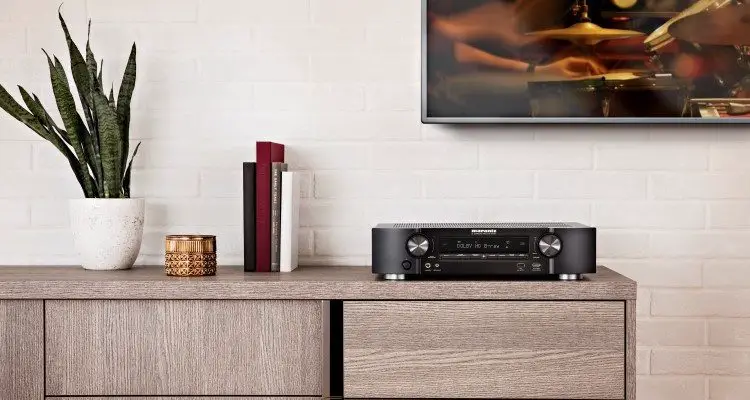
As with all the NR models there is a certain criteria that needs to be met in order for this units to really be able to offer what they are meant to. Reasonable power needs. If you are not looking for a particularly powerful receiver, as your home cinema will probably be set is a very limited space, then the NR1510 can really shine and offer you some of the best surround audio a receiver can. Stick to that and the NR1510 will certainly reward you with its abilities.
Ports and Connectivity
If there is one thing that we learned reviewing some of the models in the NR series is that size is not a factor when it comes to the number of connections a receiver can offer as the higher end NR1710 that we had reviewed recently came fully packed with ports that even some fully sized models would be jealous of. The NR1510 on the other hand will naturally have to make cuts on this regard but the most important thing is how much it too much? Let’s find out.
With the receiver being a 5.2 channels one we only get the five usual speaker terminals for the front, center and surround channels and nothing else. The terminals are made with good quality plastic for such a low end product, even if it is not so low end looking at its price. Above them we get the usual HDMI inputs with 5 of them being available at the rear for a total of six if you include the front one. There is only one HDMI output that has also ARC/eARC functionality. eARC is the new thing we get this year and it’s a feature that will stay exclusive to the 2019 model so if you absolutely need eARC then this year’s models is the way to go.
All HDMI ports support the newer HDCP 2.3 meaning they support 4K/60 Hz full-rate pass-through, 4:4:4 color resolution, HDR10, BT.2020, Dolby Vision, Hybrid Log-Gamma (HLG), 3D Signal Pass-Through, eARC and ALLM. Auto Low Latency Mode (ALLM) is also a new feature that ensures Xbox One users will have a more responsive and immersive gaming experience when connected with select TV models that also support ALLM.
So with these out of the way let’s see what else is on offer with all other connections being like for like with last year’s unit. There hasn’t been a single change on the number or type of ports so the NR1510 also has 3 composite video inputs and one output, three analogue stereo inputs and another one that is dedicated for phono, one digital coaxial and one optical input, 2.2 pre-out channels, 2 subwoofer ports, a remote control input and one output, an IR flasher input, an Ethernet port for wired connection to the internet and the usual FM/AM as well as WiFi/Bluetooth antenna connectors.
As for it’s wireless capabilities the NR1510 has been updated the same way we saw the NR1710 was. As such it also supports dual band WiFi (IEEE 802.11a/b/g/n) but this time it uses the updated Bluetooth 4.1 instead of the Bluetooth 3.0 + EDR (Enhanced Data Rate) that the NR1509 was using meaning that we get better and more stable Bluetooth connections when streaming.

So in essence the only differences we find this year are the updated HDCP 2.3 HDMI ports with eARC and ALLM functionality as well as the updated Bluetooth version. Everything else is the same and to be honest for such a low end model you probably get all that you need. Expectations shouldn’t be too high and the NR1510 has enough in order to create a basic home cinema system.
OS, Apps and Features
Let’s see now what is being offered in terms of extra features. The NR1510 comes with the Audyssey MultEQ sound calibration feature that will help you adjust your specific system in order to get the best possible acoustic outcome. People going for this receiver most probably are inexperienced users so having such a system can greatly help you with all the necessary settings which means that you will not have to loose your time wondering what you have to do. A manual calibration is always the best but for newcomers or those that just want to simply enjoy some surround sound these automatic systems can really help.
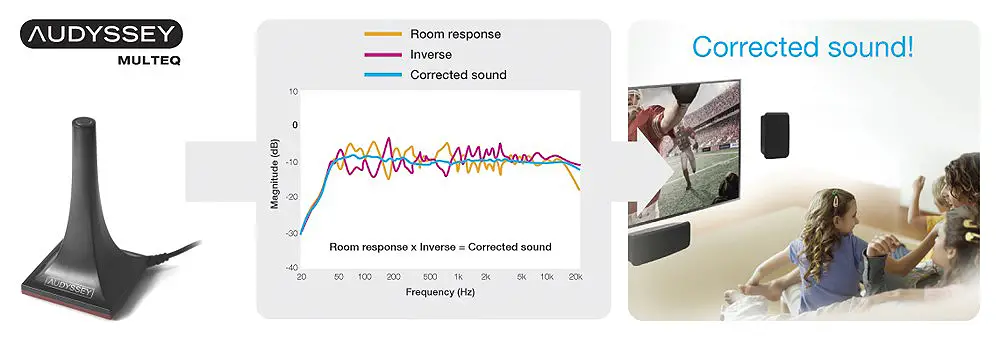
Along with the main Audyssey system there are a couple of extra features that come with it with one being the Dynamic EQ that keeps the dynamic levels as well as clarity even at low volume while the second is Dynamic Volume that balances sudden volume spikes when there are shifts between TV programs and commercials. This trio of systems is the most basic version you will find in any Marantz AV receiver but it is enough for some basic calibration. Unfortunately one thing we are missing here is the Audyssey MultEQ Editor App that can be used with higher end models for more thorough calibrations as it is not supported in the NR1510.
But one app that you can use is the Marantz AVR Remote app that is available for both iOS and Android devices and you can control the receiver through your mobile device. The app is free on both stores so you can download it and give it a go to see if you like it.
As for the built-in user interface we get exactly the same menu and visuals that we had seen many times before meaning that all settings and options are separated into different categories depending their function even if they look visually dated and certainly could use a fresh look. But their simplicity means that you can easily find anything you want even if it’s your first time tackling with a Marantz AV receiver and have no previous experience of their menu structure.
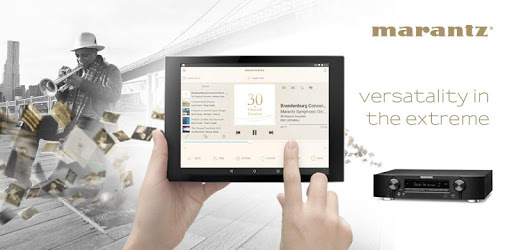
Another area where not much have changed is in its streaming capabilities. As such the NR1510 is capable of streaming audio from a network drive or NAS server that you may have connected in your local network or from the internet from one of the available streaming services that include Internet Radio, Spotify, Napster, Pandora, SiriusXM, Tidal and Deezer meaning there is something for almost everybody. And with the unit’s wired and wireless capabilities you can choose the best way that suits your needs. Lastly you can stream audio also through the Airplay app from Apple devices with the use of Bluetooth.
Next in line are the multi-room capabilities of the unit. In true Marantz fashion the NR1510 supports the HEOS multi-room technology that lets you connect various HEOS enabled speakers wirelessly to the receiver. If you use multiple speakers around your house you can create your very own custom multi-room environment. One new feature we found in the NR1510 when it was first released was that it came with Airplay 2 support which is Apple’s solution to a multi-room environment that is capable at connecting Airplay 2 enabled speakers which means mainly Apple speakers. But since then Marantz also updated the NR1509 with an Airplay 2 firmware update so this feature is common among all their models.
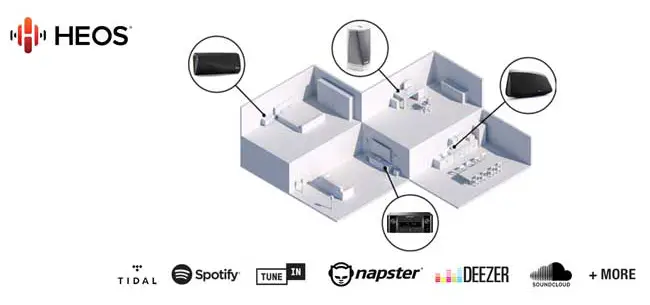
Another feature that was originally updated in the NR1510 was in its voice control supporting functions. The new 2019 model supports all 4 voice control platforms with Amazon Alexa, Google Assistant, Siri and Josh.ai all present. Originally the NR1509 only supported Amazon Alexa but since then it has also been updated to support all four of them bringing it in line with the rest of the units. For Alexa and Google Assistant obviously you will need an external speaker while for Siri you can use the Airplay app to issue your commands.
Another standard feature we get in all Marantz AV receivers is the ECO mode that you can enable and let the receiver regulate it’s power output depending on the needs. This way you can achieve better power economy but obviously this may have a negative effect on the receiver’s performance and as such we prefer to leave this turned off.
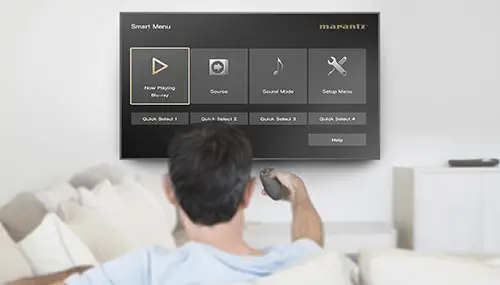
There are a couple more extra features that are worth mentioning with one of them being custom integration support for both Ihiji Invision and Domotz Pro, a feature that we were seeing mostly on higher ends models and now seems to be supported in all units in their lineup. Lastly there is HDMI-CEC which allows you control the receiver through the TV remote and thus lower the number of remotes needed to use in your home cinema. By turning the Smart Menu on, on the receiver you can use the TV remote to navigate through a set of menus especially created for this reason and allow you to change many of the unit’s functions.
The NR1510 comes with the most basic set of extra features from all the Marantz receivers we have tested so far. Obviously this was to be expected as the unit sits at the bottom of Marantz’s lineup so a few more advanced features are missing but without their absence affecting the overall performance of the unit when it comes to its online and streaming capabilities. As such there are features like Bi-amp, HDMI upscaling and IMAX Enhanced that are mostly kept for the big boys without these being the kind of features that you would be missing if you are thinking of getting the NR1510.
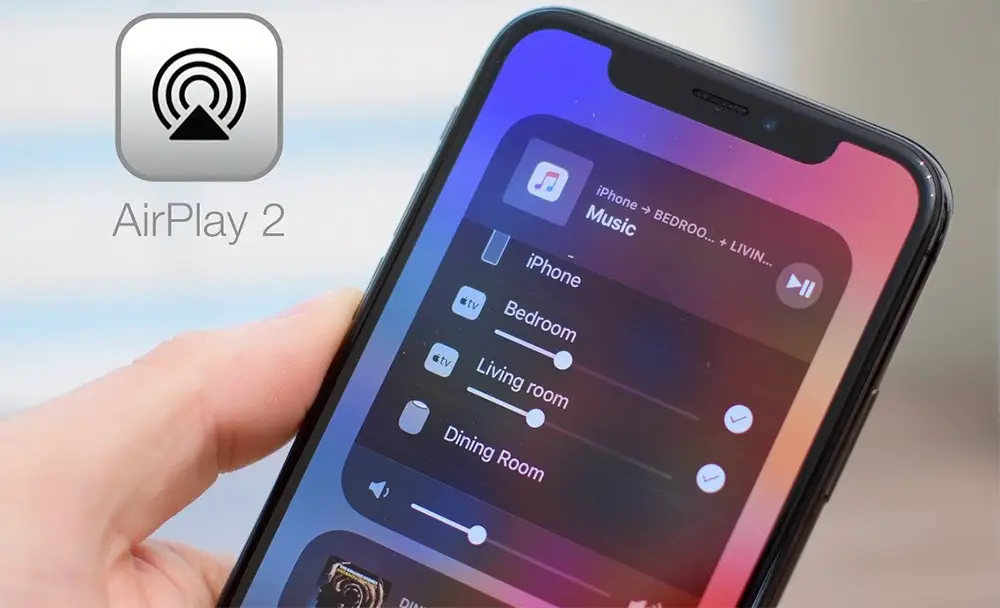
Final Thoughts
Before we finish our review we need to clarify one thing that many readers may be looking for. With the NR1510 being so similar to last year’s NR1509 are there any actual differences between the two to warrant an update? Marantz seems to offer the NR1509 around $50 cheaper so differences should be minimal in theory and this actually seems to hold true. The NR1510 actually has 2 differences with one being the updated HDCP 2.3 HDMI ports with added eARC and ALLM that the older NR1509 doesn’t have and a newer Bluetooth version with v4.1 instead of the older v3.0 + EDR that was used in the NR1509. All other updates including Airplay 2 as well as Google Assistant, Siri and Josh.ai support that we found in NR1510 has also been included in the NR1509 through updates.
Obviously the Marantz NR1510 is destined for a very specific market. With 5.2 channels, 50 watts of power, Dolby TrueHD, DTS HD Master Audio and High Resolution Audio support along with having HEOS, Airplay 2 and all voice control platforms to play with it’s most definite highlight is it’s slim size. If you want to create a simple 5.2 channels surround setup due to extreme limitations in space then obviously Dolby Atmos and DTS:X are not necessary and the NR1510 will fit you just perfectly and with it’s slim factor it’s a receiver that will most probably fit anywhere.
As for it’s downsides if you read our review then they are pretty obvious. 50 watts of power may be enough for small rooms only and certainly wouldn’t be able to stand in a middle sized or large home theater. Also there is no Dolby Atmos or DTS:X support but we are also missing all up-mixing and virtual technologies that we see in even low budget full-sized receivers nowadays. Lastly for the specs that we do find the Marantz is certainly a pricey offer. At $600 at the moment of writing this unit is certainly not cheap and this will for sure have a negative impact on consumer’s decision.
In the end the NR1510 is destined for those that definitely want a Marantz AV receiver but are extremely tight on room space meaning that they have no requirements for a Dolby Atmos setup or a full-sized unit which in return means saving up as much as possible. If you identify yourself in this group then the Marantz NR1510 is a receiver that comes with the proven quality of Marantz but scaled down to the absolute minimum that your area and needs will allow.
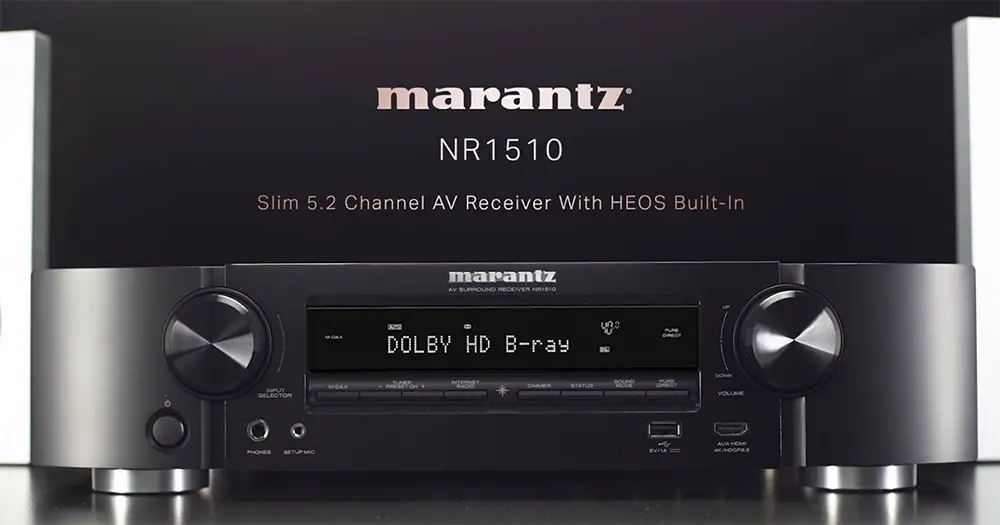
For more reviews you can check our dedicated Slim Line 4K AV Receiver reviews list or even look at our Product Reviews Table where you can find the brand and specific product you are looking for.
Cheapest Places to Buy :
*We are a reader-supported website. When you buy through links on our site, we may earn a small affiliate commission at no extra cost to you. Home Media Entertainment does not accept money for reviews.*

Hello, i really want to first appreciate your effort in putting this great website together and writing this article. I am so pleased with the Marantz NR1510 the fact that it works with alexa is awesome and with a sound quality like that music just became more enjoyable. Prices seem to differ on ebay, anyways this is a great product
I am glad you are enjoying it Benny. It’s a good unit.
I must say this is a very nice and and informative review on the Marantz NR1510. It’s one of the best, low end av receives that I have used apart from the Denon av receivers… I think this is a very good model and i would definitely get it for my aunty as a Christmas gift.
That would be a really nice gift indeed!
Hey Stratos, Thanks for writing your review on Marantz NR1510. You have gone through great effort to give us so much info on this lovely little receiver. There is little difference between the Marantz NR1509 and Marantz NR1510 but I prefer Marantz NR1510 as I need one with an eARC HDMI port.
Thank you .. Parveen
If you need the eARC then the NR1510 is your only option as this is a feature that will not be added to last year’s models.
A very comprehensive review and a perfect AVR for my small vacation home. Some questions for you if you can answer: 1. I am going to configure whatever slim line AVR I choose to a 3.1 main room (no surround). I have 2 passive (wired) speakers on an outside deck I wish to operate as Zone 2 (separate inputs and volume control from the main room). I can’t seem to get an answer from Marantz on this and don’t understand the whole HEOS technology and whether it would apply with a minimal upgrade to the outside speakers??
2. I want Bluetooth to be both Tx and Rx for Bluetooth headphones and streaming from a device. How do I assess whether these units have that capability?
Thanks!
Hello Mark. Let’s see your questions.
1) Unfortunately the NR1510 does not support Zone 2. This means there are no additional speaker terminals so you can connect an extra pair of speakers to another room. HEOS is only for if you have dedicated HEOS speakers that use their own power and can connect wirelessly. If you want to connect an extra pair of speakers you need the receiver to have zone 2 support so you have to go for either the NR1609 or NR1710.
2) As for your second question none of the Marantz receivers have transmitting Bluetooth capabilities to connect to bluetooth headphones. You can only stream audio from a Bluetooth device to the receiver not the other way around. The only solution for this is to buy a Bluetooth transmitter that you connect in the headphones jack of the AV receiver. It’s the easier and most simple way to do it.
If you need any more help let me know.
Stratos
I believe they patched in bluetooth headphone support now
https://denon.custhelp.com/app/answers/detail/a_id/7008/~/how-to-setup-your-marantz-avr-to-output-audio-to-bluetooth-headphones
Hey there. Although I don’t have a unit to actually test this it seems to be so. They have even added this feature in their official website so it seems that indeed the NR1510 can transmit now to Bluetooth headphones. Thanks for the heads up.
A well written review, thank you.
I want to upgrade from my good old Marantz NR1501. My current receiver doesn`t feature a ARC/eARC, so streaming Netflix etc. with a TOSLINK for audio-output is not optimal.
I have a pretty decent Teufel 5.1 speaker setup in my 40qm living room, I will add no extra speakers. Should I wait for a Marantz with Dolby Atmos or is the currrent 1510 a good choice? Is Dolby Atmos ok with a 5.1 setup or will I gain nothing from Dolby Atmos with “only” 5.1 speakers?
I have limited space in my TV-rack so I need a slim receiver. Or should I buy the 1710 instead?
Hello Gerald. If you plan on staying on a 5.1 system then having a Dolby Atmos AV receiver will not gain you much. Going for the NR1710 will get you Dolby Atmos height virtualization and DTS Virtual:X which you could use in a 5.1 system to create the illusion of Atmos effects but how much difference these virtual technologies will make is questionable as they depend very much on the room acoustics and on what each user is expecting to get. In the best case scenario it would be ideal to find a test unit in a show room and determine yourself if these are something you like because if not going for the NR1510 will save you some money.
Now if you don’t have this ability, well…if I were you I would go for the NR1510 as I was never very fond of these virtual tech.
Thank you for your honest answer.
Maybe there will be a Dolby Atmos height virtualization and DTS Virtual:X firmware update for the NR-1510 – it would be a good idea for the 5.1 receiver.
Hey Gerald. Well, I don’t know if the NR1510 is capable of supporting these features through a firmware update but I have a small idea that Marantz will keep these only for the better NR1710. So If you absolutely would like to have them then I wouldn’t hold my breath for the NR1510.
Hi can I use this unit along with 2 passive subwoofers…
No. Both subwoofers must be active.
Very nice in depth write up!
I could use some advice on this unit, here are my thoughts on what I am trying to achieve.
My set up so far: Carver TFM-35x Power Amp (I can’t let it go)
Parasound 2100 Preamp
Martin Logan Motion 40 Towers for mains
Motion 15’s for surrounds
Motion 30 – center
No Sub just yet, leaning towards SVS
Running dedicated 2-channel for music thru the Carver & Parasound but want to get a small unit like the Marantz for the movie end.
The Parasound has a HT bypass and will power the main towers even when off..
I was thinking I could power the Center & motion 15’s thru the Marantz but not sure if I am on the right path. One issue I wonder if this unit has enough power for the Center.
I am more into the music end but would like a decent HT as well.
Any thoughts or help would be appreciated
TIA
Hello Rob. The Martin Logan Motion 30 is a 4 Ohm speaker. Although in theory the NR1510 may be able to drive it it’s a risk and I wouldn’t recommend it. Using a 4 Ohm speaker with a 8 Ohm receiver is only recommended for high end models that have enough power and ventilation to drive such demanding models. And with the NR1510 being on the low end of things it would be a disaster in the making.
I must have overlooked that, glad I asked!
Really did not want to get to deep in the high end of the HT part of it.
Maybe I will pick up another Motion 15 & use that as my center instead of the 30. Not sure where else to look, I am an old school 2-channel driven music guy
Much appreciate your response
No problem Rob. Let me know if I can do anything else for you!
I was not sure if my reply went thru.
I must have overlooked that & glad that I asked!
I might just get another motion 15 maybe, hate to lose the 30.
Not sure which units to look at or even the price range I should be looking at.
Seems like many state state compatible with 4, 6 or 8ohm.
5.2 is all I am after with a phono stage.
I am not to privy on multi-channel units so any direction you could
get me started on I would appreciate.
Thanks for your timely response and insight
Hello again Rob. The last time you asked me I made a terrible mistake. It seems that the NR1510 does indeed support 4 Ohm speakers. I checked the manual and confirmed it. I must have missed it the last time. I am really sorry about that.
So now that the Ohm is not a problem the only question mark is if the NR1510 has enough power for these speakers. The Martin Logans say they need a 20 watts minimum power. On the other hand the Marantz has a 50 watts power rating but keep in mind that this is theoretical and when all channels are active this goes down. The question is how much and if it will be enough for your speakers. No matter how you see it you will be very close on the low end and these speakers certainly deserve something better.
If you want my opinion if you want to stay with the Marantz brand I would recommend you to go for the SR series which are the full sized AV receivers they have. You don’t have to go very high as their lower tier model, the SR5015 has plenty of power for your speaker. I just recently reviewed the SR5015 so you can check it out. Otherwise you will have to look for one of the other brands if you want something cheaper but at the same time to have more power than the NR1510.
Excellent, thank you for the update and all the information.
Helps me out a great deal.
I will let you know what I decide on in the near future.
thank you again!
No problem Rob. Glad I was able to help.
Front speakers may be powered by a separate power amplifier from the preamp outs in the back. That could obviate the need for a SR model.
His problem is the center and surround channels not the front ones. The NR1510 in theory can support it but it will certainly be on the low end of it.
NR1510 question: I have a Rega Planner 2 turntable that I plan on using the Phono Audio In Jacks. I would like to send the sound out not only through my front sound stage but also through a Sonos Port for the rest of the house. Since I need to amplify the turntable through the receiver first should I use the Pre-Out L/R channels to connect the Sonos Port so I can send the signal not only to the front channels but to the Sonos system? Thanks.
Hello Robert. In theory this should work but there is one problem. Since the pre-outs pass the signal without amplification how will the Sonos port get that signal since I see that it doesn’t amplify the signal itself. The only way to do it would be to connect an amplifier in the pre-outs of the Marantz and then connect the amplifier to the Sonos port in order to get the pre-amplified signal.
Thanks for your reply. My thought was that since the Sonos speakers have built in amps (active speakers) it would work. Maybe I’m wrong. What are your thoughts?
Happy New Year Robert!
Ah, then this might work. I thought you were planning to use the analogue output of the Port to drive passive speakers. But If we are talking about active Sonos speakers then this might work. In theory everything seems to check out but naturally I cannot be 100% sure as I have never done something like this before to know if there is a catch.
Hello Stratos
Is Onkyo SKF 330F compatibily with Marantz NR1510/N1B AV receiver?
Thanks for replay
Miro
Hello Miro. There is no reason why you can’t use these speakers with the NR1510. They are 8 ohms speakers and can accept up to 100 watts of input power according to their specs so they are well within what the Marantz can offer them.
Thanks for answer Stratos 🙂
You are welcome. Let me know if you need anything else.
Hi stratos,
Thanks for the amazing review. I was planning on getting the NR1510 as I’m on a budget. I was also reviewing the denon CEOL N9. My requirement is mostly to play music and the room size is about 300 sq feet/30 sq meters but good enuf for an occasional party in the same space. Is this loud enough to enjoy across this room size. And would u recommend the denon ceol or marantz nr 1510
Hey Ransley. You cannot really compare the CEOL N9 to the NR1510. The N9 is a pure network music system while the NR1510 is an AV receiver that can be used both for music and for movies. If you want both then the NR1510 is your only option. Otherwise the CEOL will suffice and it’s a much better option for pure music use.
Hello Stratos, nice review and excellent advice given to many who have responded. I recently purchased the NR 1510 to replace an aging Anthem MRX, I only needed something small for my bachelor suite. The Marantz fit the bill along with the smaller Paradigm Prestige 75F floorstanders, Paradigm Monitor CC190 v5, the Paradigm Atom V5s for surrounds and a REL HT1003 subwoofer. I recently added a Marantz MM7025 140 wpc amp to bolster the biwired 75F main speakers and to allow the NR 1510 a little more power for the center and surround speakers.
Sounds great in 2 channel and is pretty awesome when using the premium Panasonic UB420K for both Blu-ray and DVD concerts as well as 4k movies. I’ve used many receivers over the years but I do love the Marantz “signature sound”. I spend much more time with my audio/video gear since I retired 5 years ago and I’m very pleased with the fidelity of my system today.
My one regret at this point is not knowing about the new Cinema 70 line when I purchased the NR 1510 but the regret is purely due to aesthetics.
Hello Luc and thank you for your input and your insight on your setup. Indeed the Cinema 70s looks delicious but the NR1510 is an excellent small AV receiver. And to be honest with you I was always of the belief that if a machine offers you what you need and you are satisfied with it, never change it. Now if the Cinema 70 had something you are missing then yes, it would be a pity. But if you are perfectly fine with the NR1510 then why pay the extra price for something that you will never need?
Great review, it was a pleasure to read it. I’m wondering if I should buy this receiver but I think it won’t be enough for my front speakers Monitor Audio BX6 what do you think? I want to use it daily through eARC from my Sony A90J, I will use Monitor Audio BX6 for the front speakers, I will use the TV function for the center, and the rear speakers will either not be there or will take something small because it will mainly be used in stereo. At first I plan to try without a sub. The other important option for me is having a phono port because I will be connecting my turntable. I ask for your opinion and recommendations.
Thank you Stefan for your kind words. I really appreciate it and I am glad you liked my review. Now, from what I see the BX6 have a minimum requirement of 40 watts. The NR1510 can do 50 watts with only 2 channels. Even if you don’t add any surround speakers then you are almost at the bare minimum. I think this one will not cut it for you. I would suggest you to go for a full size AV receiver that has much higher power output because in the end the speakers may work with this one but they will not work their best with it.
Hello, thanks for the reply and I am of the same opinion. I am very glad that you confirmed my expectations. In this situation, maybe the Denon AVR-X1700H is a better choice?
Definitely the X1700H has more headroom compared to the NR1510. The higher you can go the better but between these two the X1700H is better hands down.
Hi, thanks for the quick reply. I describe my final speaker configuration and ask for your advice:
Front Line: Monitor Audio BX6, 8ohms, 90db, 40-150 watts recommended power
Center: Internal speakers in TV SONY A90J
Rear line: Monitor Audio BX1, 8ohms, 88db, 15-70 watts recommended power
Sub: first time without external sub
Based on the budget, the AVR-X1700 is preferable, but I can try to add more and get the X2800. At the moment in Bulgaria, 1700 is at a promotional price of 700 euros, while 2800 is between 950 and 1000, which is important for me. I am also accepting offers for other brands and models in these price ranges. An important requirements is that the receiver has a PHONO input because I have a turntable Project that I want to listen with this system also.
Hey Stefan. Well, Obviously if your budget allows for it go for the X2800H. Your speakers will surely appreciate it.
As for an alternative I don’t know specific prices in your country so what I will say is based mostly on US prices. If you can spend up to about 1000 a good one is the Onkyo TX-NR6100. It costs around 800 euros/dollars, has more power than even the X2800H at 100 watts and for the extra money you could add a center speaker also which I vastly recommend instead of using the A90J which is not ideal when combined with the rest of the speakers.
I will consider the option of getting the Onkyo TX NR6100 or the Denon AVR-X2800, they are practically the same price for me. Where do you think the Denon AVR-S970 ranks compared to the 1700 and 2800? Regarding the central speaker, it will be the TV at first, but maybe this will be the next step in time to improve the system. In your opinion, which is more important replacing the center or adding a sub? What do you think of Systems 5.0 in general?
Well, there is no clear place for the S970 because the other two belong in the X series meaning they have some features the S series does not but on the other hand the S970H has more power than the X1700H. So I could place it in between the two X receivers but this is mostly due to the power output and not so much in terms of other features it has.
Between a center speaker and a subwoofer I would definitely go for a subwoofer. You will feel the difference much more. At least this is what I would do.